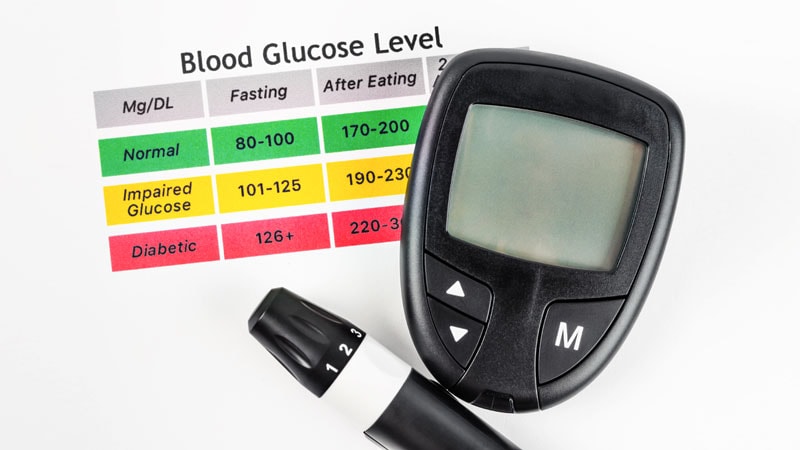Researchers published the study covered in this summary on researchsquare.com as a preprint that has not yet been peer reviewed.
Key Takeaways
-
The results showed a significant association between changes in fasting plasma glucose (FPG) and rate of incident diabetes in a multicenter cohort of residents of China.
-
FPG changes were a consistent indicator of incident diabetes. People with increases in FPG greater than about 1 mmol/L had a significantly increased rate of incident diabetes.
-
The association between changes in FPG and incident diabetes was stronger than for several other candidate metabolic markers including triglyceride (TG) level, FPG at baseline (as opposed to change in FPG), body mass index, ratio of TG to high-density lipoprotein cholesterol (HDL-C), and fasting triglyceride-glucose (TyG) index.
-
The association of FPG changes with incident diabetes was nonlinear and showed a characteristic relationship that was consistent regardless of the distribution of several variables including age, sex, triglycerides (TG), and systolic and diastolic blood pressure.
Why This Matters
-
The sensitivity and specificity of the predictive model based on FPG changes were higher than those for fasting TyG and TG:HDL-C ratio, parameters that have recently received endorsements as useful ways to predict incident diabetes.
Study Design
-
The study focused on 116,816 adult residents of China who had been included in a database (compiled by the Rich Healthcare Group) of more than 200,000 residents who underwent medical assessments in 2010-2016.
-
Researchers analyzed incident diabetes relative to several metabolic markers: FPG, TG, total cholesterol, HDL-C, change in FPG, change in TyG, and change in TG:HDL-C ratio. FPG change referred to the difference in levels measured at baseline and the final visit.
Key Results
-
During a median follow-up of 3.1 years, 2669 people developed incident type 2 diabetes (788 women and 1881 men). The overall age-standardized incidence of diabetes was 12.87 per 1000 person-years, and was 11.04 per 1000 person-years in women, and 14.69 per 1000 person-years in men.
-
Almost all the fitting curves for diabetes probability relative to magnitude of change in FPG were nonlinear and featured associations with a “hook-like” pattern. At the lowest levels of change in FPG, increases in the change linked with a decreasing incidence of diabetes, followed by a sharp elevation in diabetes incidence at higher rates of FPG change, and was finally followed by a slow increase in diabetes incidence at the highest rates of change in FPG. In short, the association of change in FPG and rate of incident diabetes fell into three distinct phases and included two clear inflection points.
-
In addition, women and men with a baseline FPG level ≥ 5.6 mmol/L (≥ 100 mg/dL) included a higher proportion of people with incident diabetes compared with those with a baseline FPG level < 5.6 mmol/L.
Limitations
-
The researchers only assessed incident diabetes relative to FPG at baseline and at the end of follow-up.
-
Data were not available for oral glucose tolerance test results, postprandial plasma glucose levels, or A1c.
-
For many people in the database, data were missing on smoking and alcohol use, and so the impact of FPG changes was not adjusted for these factors.
-
A relatively small proportion of people in the study (< 10%) had very large increases in FPG (rates that fell beyond the curve’s second inflection point), which limits generalizability of the findings for people in this range.
-
A diagnosis of diabetes of people in the database was based on self-report or FPG level at the final follow-up assessment.
Disclosures
-
The study received no commercial funding.
-
None of the authors had disclosures.
This is a summary of a preprint research study, “Nonlinear association between changes in fasting plasma glucose and the incidence of diabetes in a nondiabetic Chinese cohort,” written by researchers at Bishan Hospital of Chongqing, China, and their associates on Research Square provided to you by Medscape. This study has not yet been peer reviewed. The full text of the study can be found on researchsquare.com.
Source: Read Full Article
